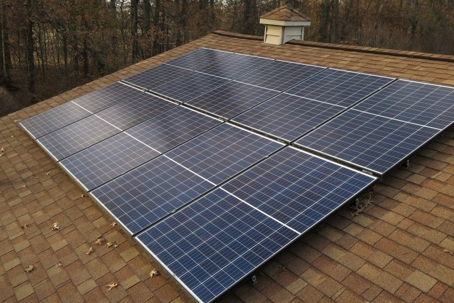Net energy metering (NEM) is a state-run program for residents who produce their own energy (such as through solar PV panels) to send their surplus power back to the local utility company to be distributed on the grid. In states that allow NEM, like California, residents who generate their own energy receive a credit on their electrical bills for the excess energy they send back to their utility provider.
You may also have heard net energy metering referred to more simply as "net metering." NEM greatly benefits residents as it can significantly offset energy costs.
How Does Net Energy Metering Work?
In California, NEM programs are available to PGandE, SCE and SDGandE customers. To participate in California's NEM program, residents with solar energy systems must pay a one-time interconnection fee and non-bypassable charges on each kilowatt-hour of energy they consume from the grid.
In California, non-bypassable charges include:
- Department of Water Resources' bond charges
- Public purpose program charge
- Nuclear decommissioning charge
- Competition transition charge
Customers will also have to move to a time-of-use (TOU) rate in which they are charged at different rates based on the time of day they use power from the grid. NEM customers do not pay standby charges.
How Often Do You Get Your Earned Financial Credits?
Credits for surplus energy are provided at the full retail rate. Bill credits are applied monthly and at the same retail rate the consumer would have paid according to their current rate structure (reminder: TOU rates are based on the time of day energy is consumed, with peak hours being more costly). At the end of the customer's 12-month billing period, they will also be compensated for any surplus electricity they produced. This is called net surplus compensation (NSC) and is paid at a fair rate based on a 12-month rolling average of the market rate.
What About Virtual Net Energy Metering (VNM)
Virtual net metering (VNM or VNEM) is a net energy metering program for multi-tenant properties with solar PV systems (or other renewable energy systems). These solar PV systems typically do not provide energy directly to the tenants in the building but instead feed all collected energy into the grid. With VNM, the multi-meter property owner can allocate the energy benefits to their tenants across multiple units.
Review the state's NEM information page to learn more about California's net metering program.
Updates to California's NEM Program
In 2021, the California Public Utilities Commission (CPUC) submitted a proposal to modify the NEM program. Under this proposal, current NEM program members would be locked into their existing billing structure for 15 years from when their system was turned on and connected to the power grid. The CPUC has yet to vote on the proposed changes, but it is expected that the state will roll out a new version of the NEM program sometime in 2022.
Should You Install Your Solar PV System Now or Wait?
With the expected changes to California's NEM program, we recommend that consumers donandrsquo;t delay if they are considering installing solar PV systems. It is likely in the best interest to have the system installed before the rollout of California's NEM 3.0 program. While there are still expected to be financial credits for sending excess energy back into the power grid, the rates of these credits are expected to be lower than they are currently. You can join the NEM program and lock in the current, more advantageous rates by installing a solar PV system now.
Review our blog or call our solar power experts to find out if you are a good candidate for a solar PV system. At Valley Heating, Cooling, Electrical and Solar, we have the skill and experience to help you harness the sun's energy to power your home.

